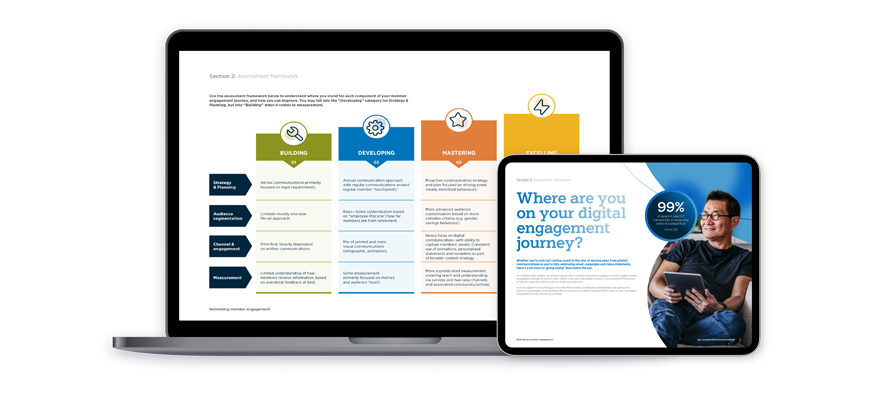
Engagement is different from communication; it’s what happens as a result of good communication.
Managing Director, Communication Practice
Financial Wellbeing


Engagement is different from communication; it’s what happens as a result of good communication.
Managing Director, Communication Practice
As the move to master trust accelerates, organisations are often tempted to default to the perfectly acceptable off-the-shelf, one-size-fits all provider communications that come as part of the package. And why not? They’re all bought and paid for, so it makes sense – in terms of a cost saving for the scheme and its members.
But a one-size-fits-all approach isn’t good enough when it comes to member engagement; and if you’ve already made the switch to master trust and decided to use the provider communications that come as part of the package, that’s exactly what you’re getting. Yes, these are generally communications that work; and, yes, some of them are actually quite nicely done too. But, as an employer, surely you want your people to know that you care about their long-term wellbeing – and not just their daily 9-5.
Taking an approach that doesn’t give away the keys to the castle with that employer kudos you worked so hard to build before you switched is crucial here. This is about helping members understand that you value them enough to provide a scheme that works specifically for them – not for everyone else. Adding a bespoke engagement layer that supplements, rather than replaces, those generic supplier communications is the way to go here.
Choosing the right people to work with is a key part of good governance. By appointing expert advisers and service providers, you’ll benefit from a diverse range of views and experience that will play an important part in the running of your scheme. Your reputation is at stake here, so think about this carefully.
Trustees and pension managers are more than comfortable with data analysis, metrics and reporting – it’s a part of the role that’s vital when it comes to good governance and best practice.
So why is it that the same standards aren’t applied to measuring the impact of pension communications and levels of member engagement? Is it because communication is still often seen as nothing more than a cost you have to budget for? It’s not, by the way – it’s an investment, and value for members doesn’t always equate to ‘low cost’.
Making sure your scheme members are receiving value for money is fundamental to being a good 21st Century trustee, and effective communication closes the gap between scheme costs and members’ perceived value of their reward package. It leads to better engagement, which leads to a better use of your budget and more positive results. You just need to measure it to prove your ROI.
When you think about the world outside of pensions, the digital space is usually the first place where a brand impacts its users.
Perhaps unfortunately for trustees and pension managers, the same rules now apply when it comes to the way members expect to interact with their scheme – which is why keeping things analogue is a risky approach to take these days, especially when it comes to monitoring the value of your scheme.
Keeping an eye on new technology on the market which could influence the competitiveness and sustainability of your scheme really matters here, because embracing the world of digital means so much more than switching from print to online newsletters or replacing your traditional paper statement with a personalised video. If you’ve already done this, great – but if that’s as far as you’re willing to go, you’re missing out on endless opportunities to positively impact the lives of your members using innovation you can measure.
